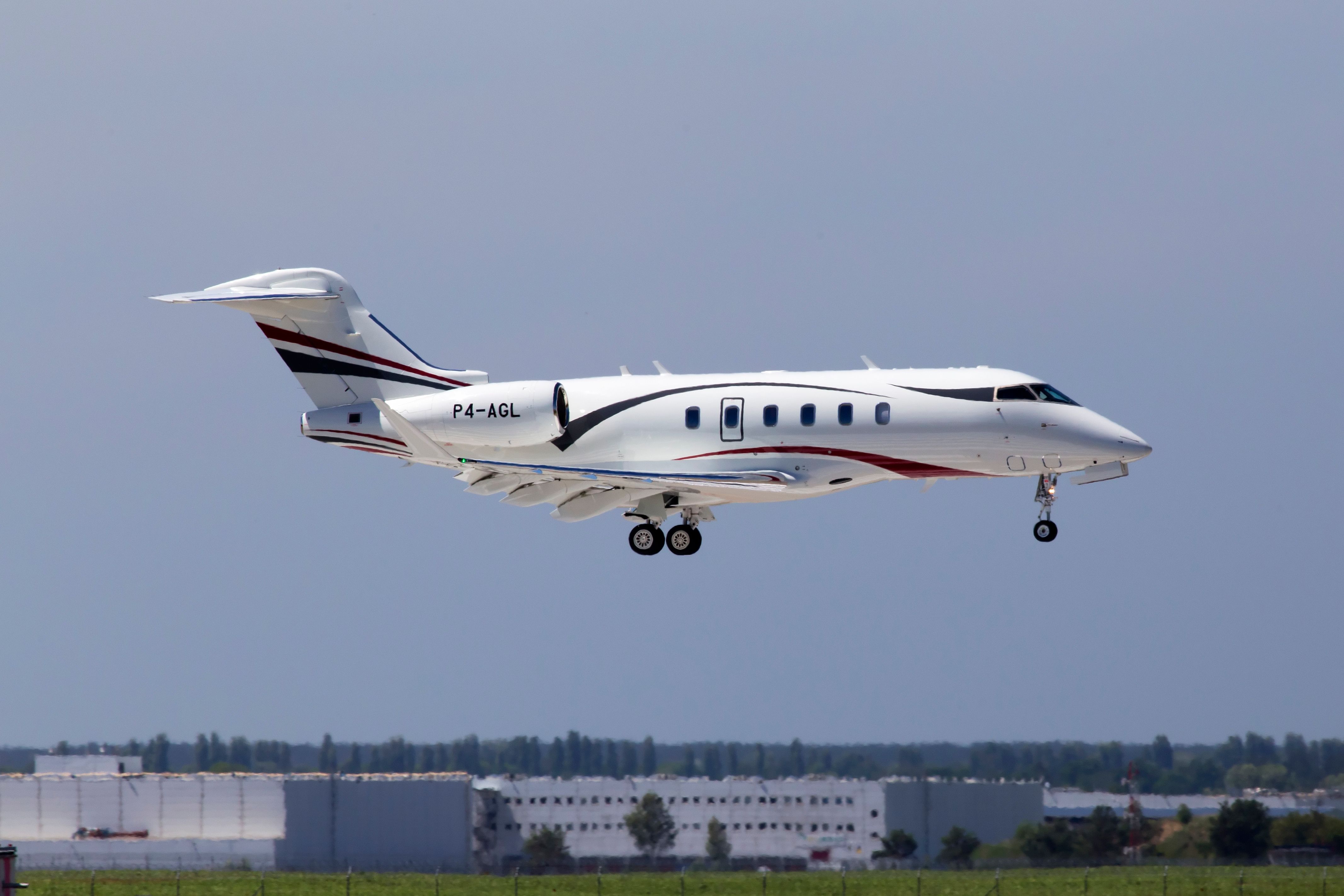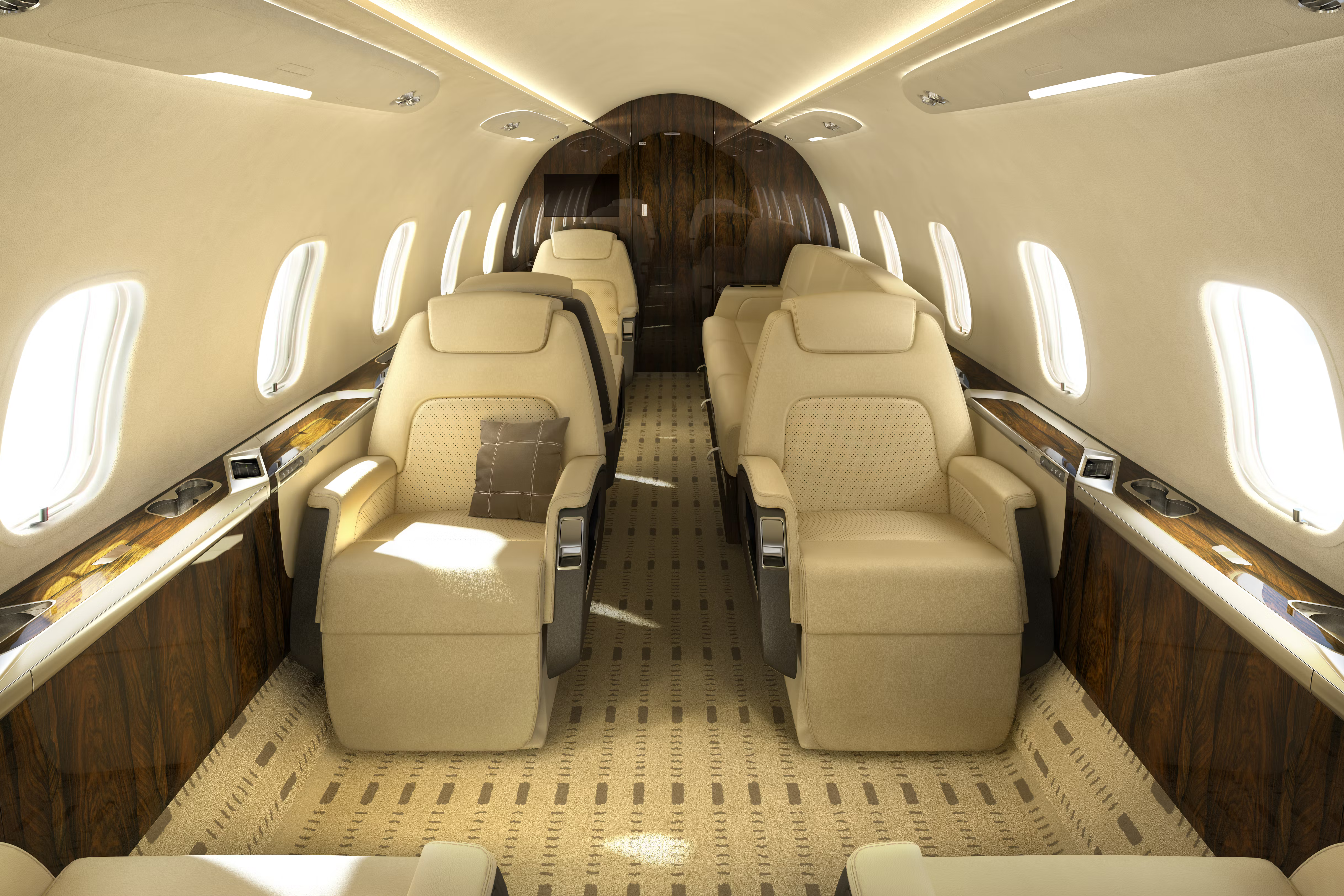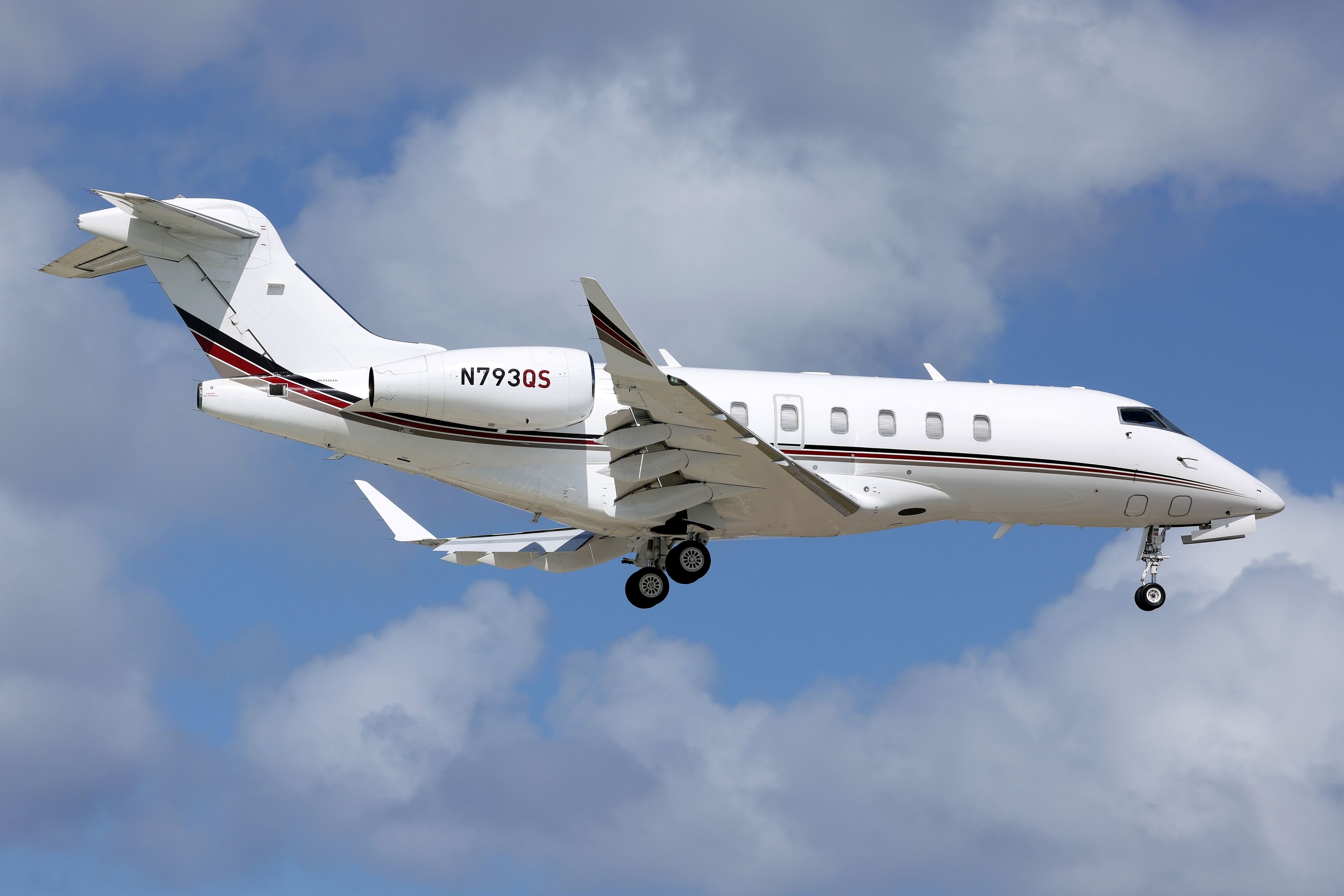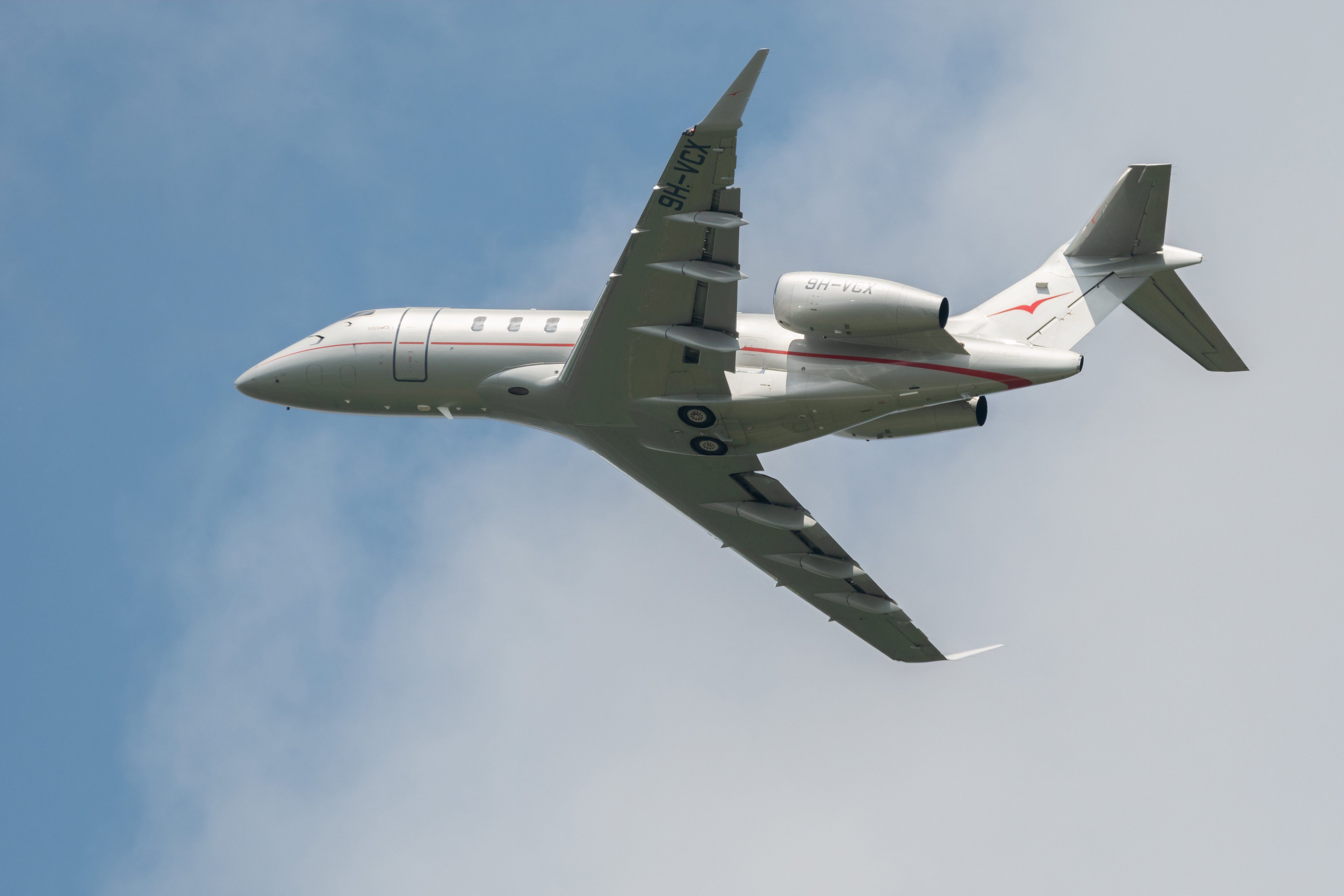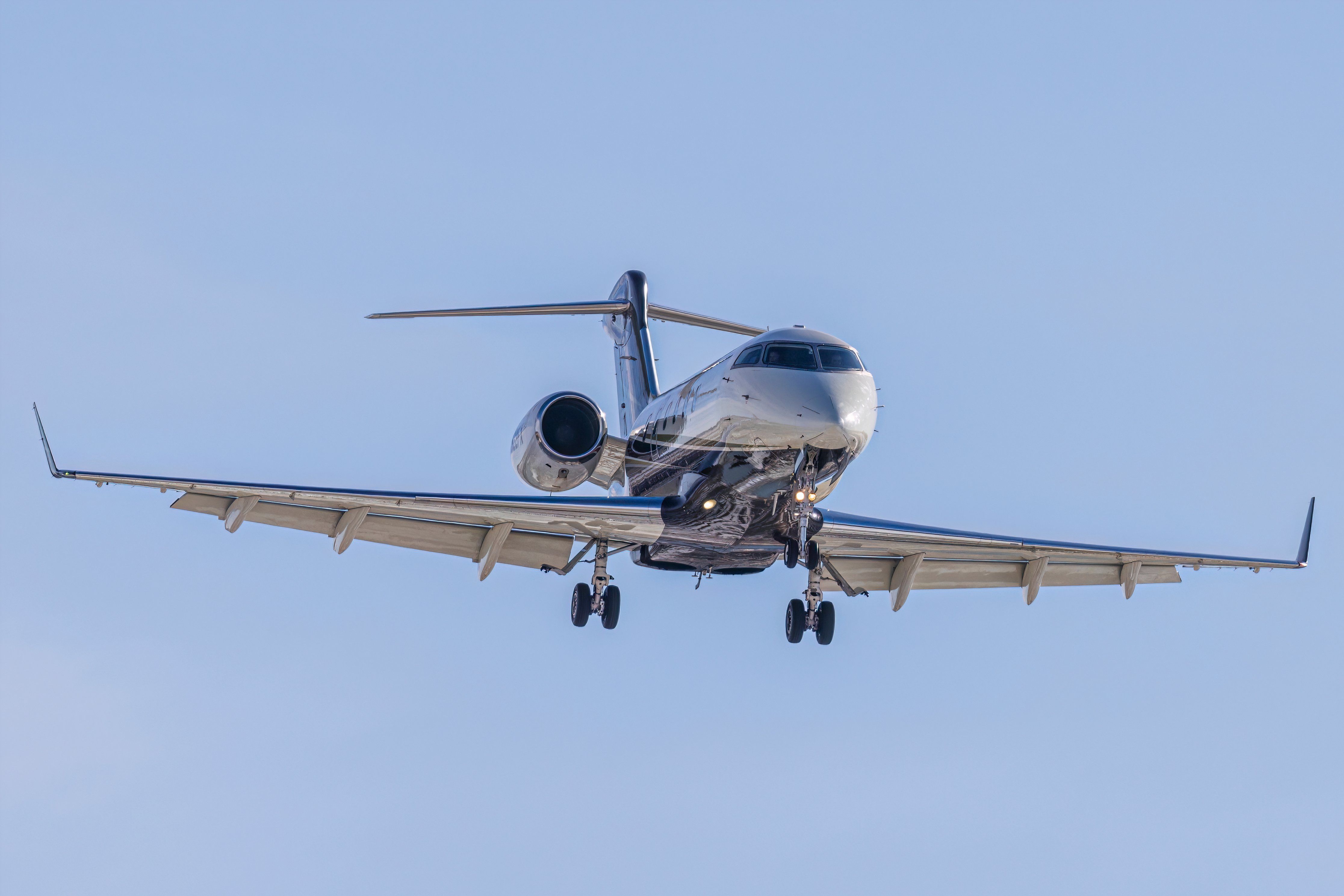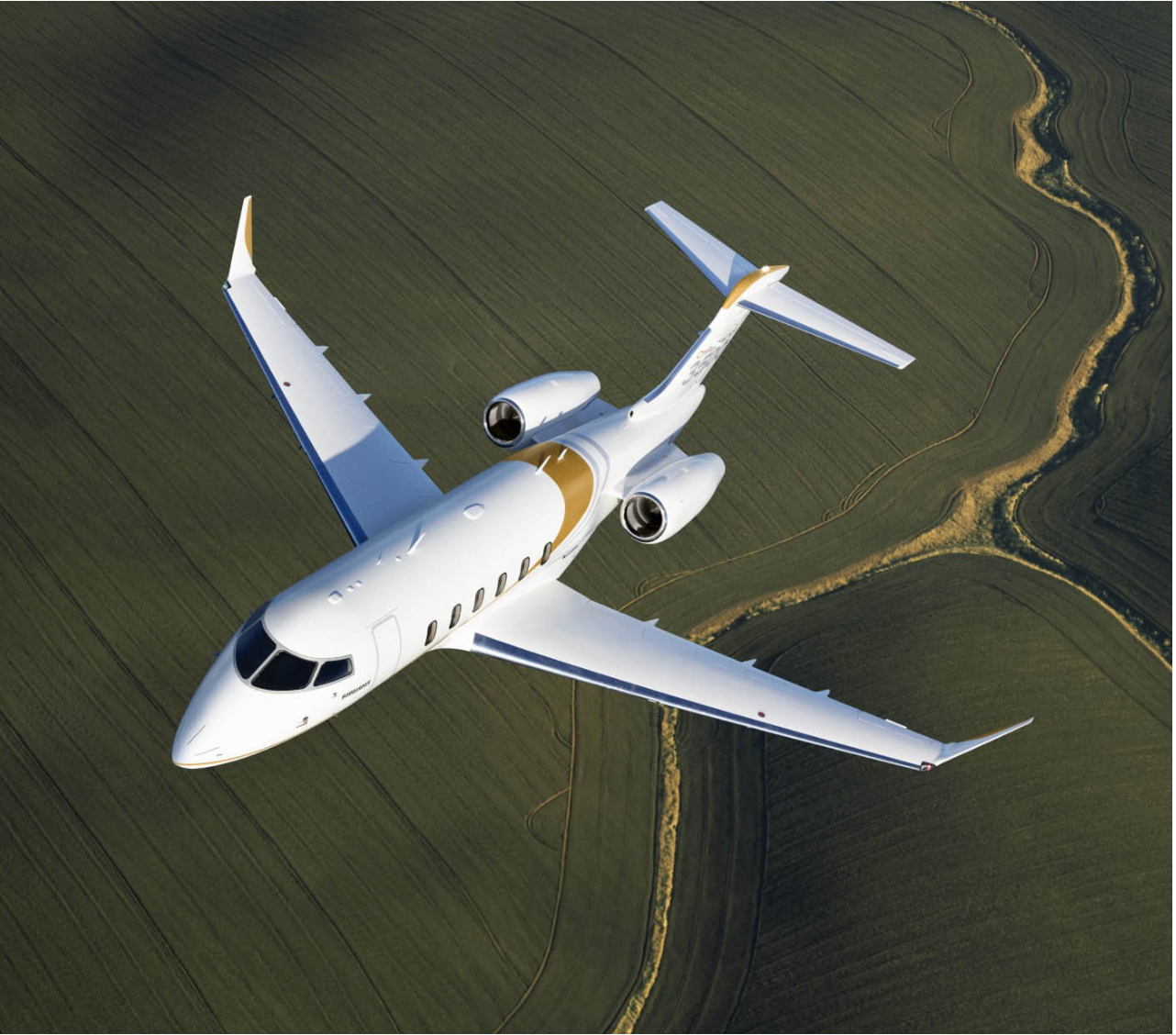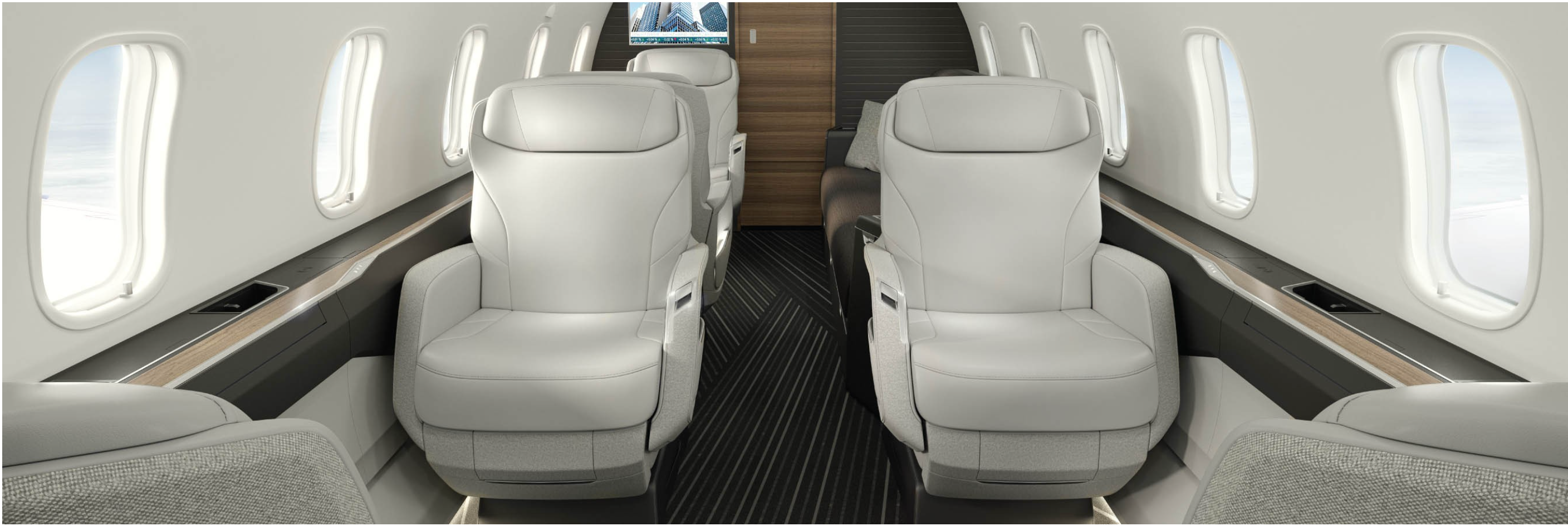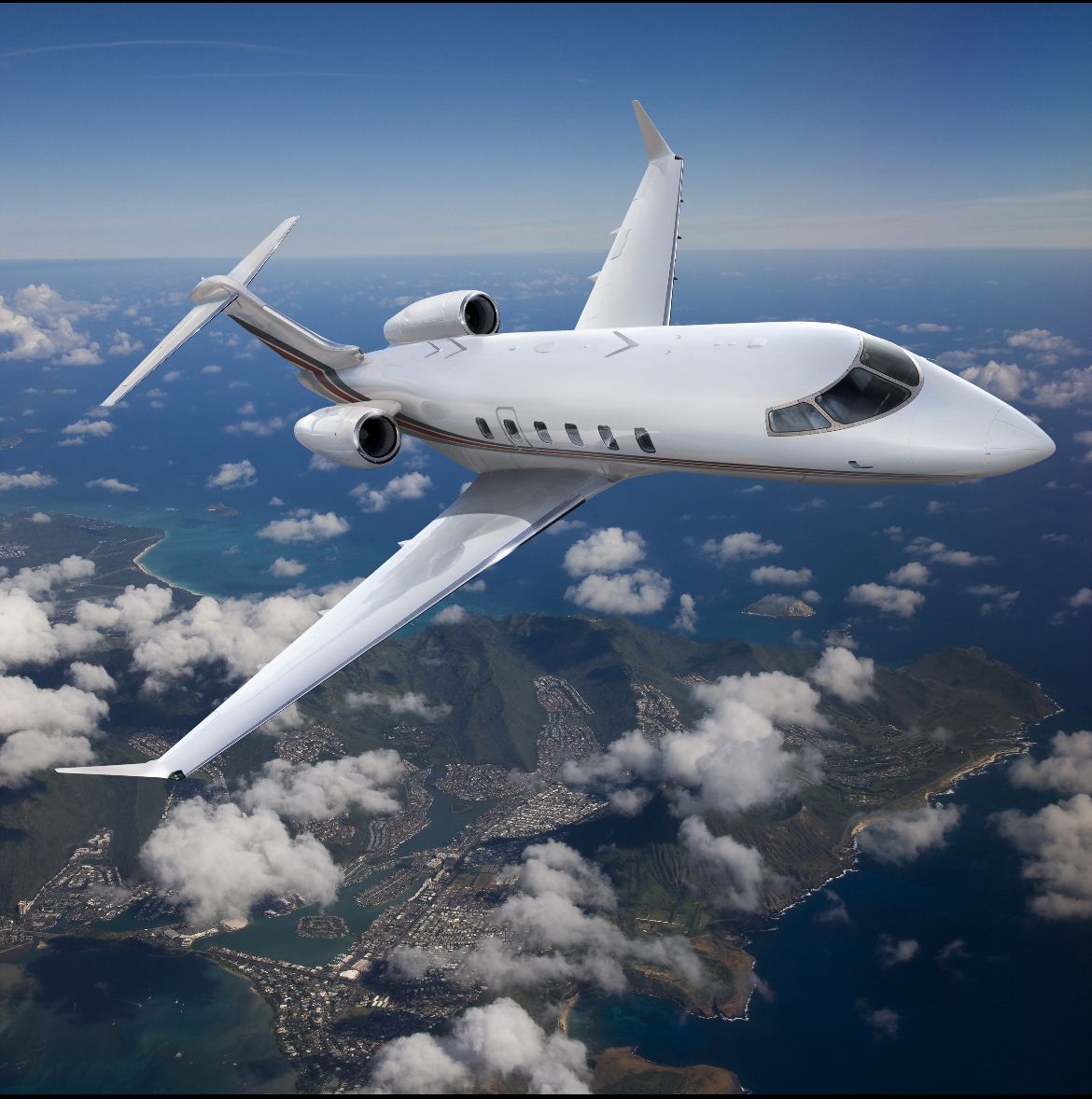The
Challenger 350
is a midsize jet manufactured by Canadian OEM
Bombardier
. It is considered a midsize/super-midsize jet, meaning it can carry up to 9 people on long-haul routes of up to six hours. Today’s article will examine why this jet is famous and which aircraft it competes with in the midsize or super-midsize market segment.
What makes the 350 so unique?
|
Aircraft |
Challenger 350 |
|---|---|
|
Wingspan |
69ft |
|
Cabin length |
68ft |
Range
The Challenger stands out due to its exceptional performance for a small aircraft. Compared to a comparable commercial aircraft, the ATR42. The Bombardier corporate jet is smaller, with a wingspan of 69 feet and a length of 68 feet, versus the ATR42’s dimensions of 74 feet in length and 80 feet in wingspan.
Photo: Artur Buibarov | Shutterstock
Despite its smaller size, the Challenger boasts a range of 3,200 nautical miles, four times greater than the range of the ATR42.
Speed
Another thing that makes the Challenger 350 unique is its operating speed. The long-range cruise is 460ktas, which is around 530mph. This means the jet can theoretically cover the distance between New York and LA, 2790m, in around five hours and 20 minutes.
Fuel efficiency
A pilot report published by AIN online shows that the aircraft with registration number CL350 has been identified as an exceptionally fuel-efficient model. During flights at high altitudes, such as 41,000 feet, the aircraft only consumes 1,880 pounds per hour (PPH). However, at lower altitudes and faster speeds, the fuel consumption can increase by an additional 750 pounds per hour (PPH).
Cabin space
The cabin interior is the final compelling feature that makes the CL350 the current best-selling midsize jet. This makes sense as it is the owner’s living quarters.
Photo: Bombardier
Looking at the image provided, we observe that the Challenger 350 aircraft features a seating arrangement that consists of two groups, each with four seats facing each other. The seats on this aircraft are comparable to those found in first or business class commercial flights, with the capability to recline into fully flat beds. However, this luxurious feature is limited, as only four of the eight passengers can enjoy this benefit at any time.
According to NetJets, customers flying on the Challenger 350 can look forward to various features designed for comfort and convenience. These include a flat-floor, stand-up cabin that enhances the overall spaciousness and ease of movement.
Passengers can relax in reclinable, handstitched leather seats, which are thoughtfully configured to facilitate conversation, adding to the luxury and sociability of the travel experience. For added convenience, pop-out tables can be easily used for work, dining, or entertainment, rounding out the premium offerings aboard the Challenger 350.
The CL350 is popular with operators.
Netjets CL250 orderbook
|
Firm orders |
Options |
|---|---|
|
75 |
125 |
This Challenger jet has become a success with operators worldwide.
Netjets
, a top shared ownership operator, was the first customer to order this type of jet. They have confirmed orders for 75 aircraft and have secured the rights to purchase 125 jets if they choose. These jets are available to customers of both NetJets USA and NetJets Europe.
Photo Kevin Porter | Shutterstock
Other noteworthy operators include Vistajet and Flexjet.
The best-selling midsize jet
According to Bombardier, in 2019, the Challenger 350 aircraft outperformed its competition by making 56 deliveries, securing a 44% share of the super-midsize segment.
Photo: Robert Buchel | Shutterstock
Since its introduction in 2014, this aircraft has consistently been the best-selling aircraft in the super-midsize market.
A solid baseline – the Challenger 300
The Challenger 350 is a variant of the Challenger 300. The baseline variant was launched at the Paris Airshow in 1999, 25 years ago. It was initially referred to as the “Continental” – a reference to its key selling point: this jet can fly coast to coast in both the US and Canada.
Photo: BlueBarronPhoto | Shutterstock
It first flew on August 14, 2001, but faced delays due to modifications needed throughout 2002. Only the year after, the jet received certification from Transport Canada in May, then the
FAA
in June, and finally,
EASA
in July 2003. In 21 years, Bombardier fulfilled 450 orders.
The design lives on
In 2021, Bombardier expanded its product line by introducing a new aircraft model, the 3500, as part of its CL300/350 series. This updated model will include the innovative Nuage seat, marking the first significant redesign in business aviation seating over three decades.
Photo: Bombardier
This seating concept, which emulates a ‘zero-gravity’ feeling for passengers by allowing adjustments to the leg rest and seat back, is already a feature in the Global 8000 model, enhancing uniformity across Bombardier’s offerings.
The term “Nuage,” French for cloud, symbolizes the seat’s capacity to provide unparalleled comfort, akin to floating on a cloud.
Photo: Bombardier
Additionally, the interior design of the 3500 model has been awarded the prestigious 2022 Red Dot: “Best of the Best” Award for Product Design, signifying unparalleled excellence in design and innovation on a global scale.
Photo: Bombardier and Netjets
Designed with the latest advancements, the 3500 will also boast an improved cabin pressurization system. This enhancement aims to ensure passengers experience minimal fatigue by offering one of the lowest cabin altitudes in its class—4,850 feet, equivalent to the altitude of Denver, Colorado—while flying at 41,000 feet. This low cabin altitude and fresh air circulation are designed to leave passengers feeling rejuvenated upon arrival.
Netjets placed 12 firm orders and 232 options for the latest variant of the Challenger 300, showing trust in the program and reaffirming its popularity.


